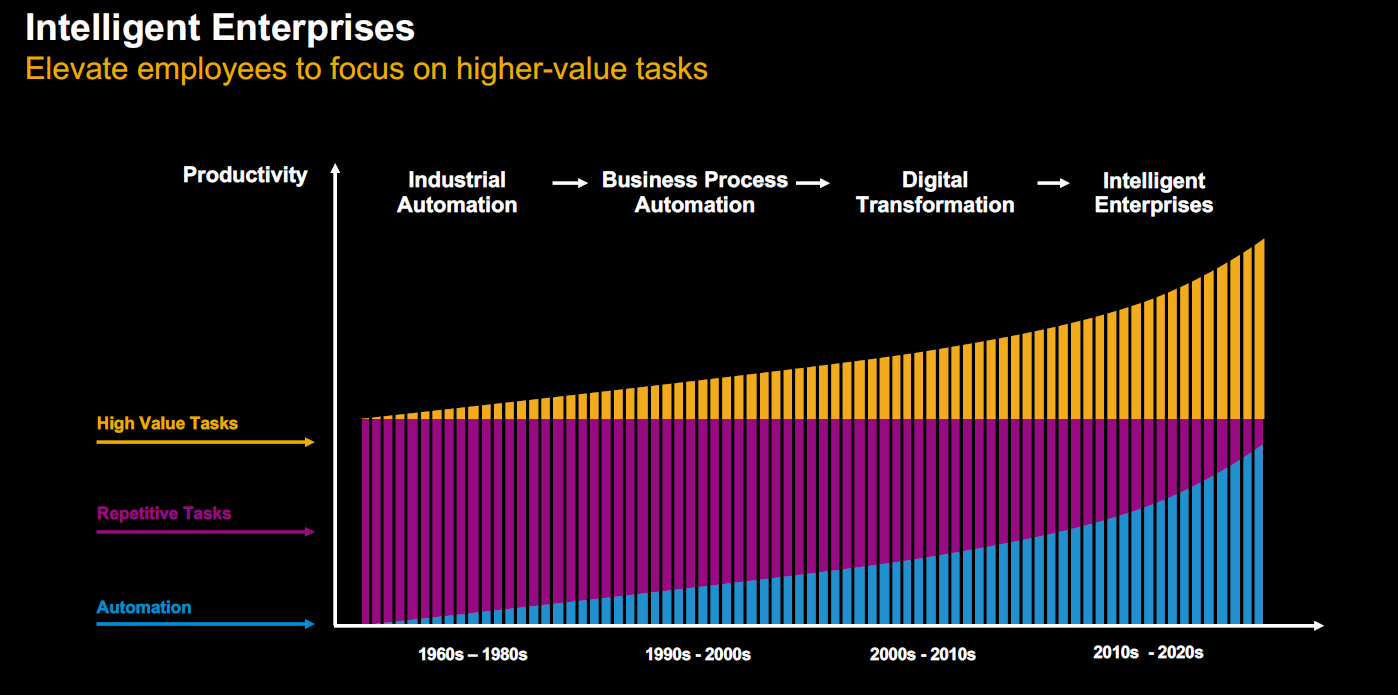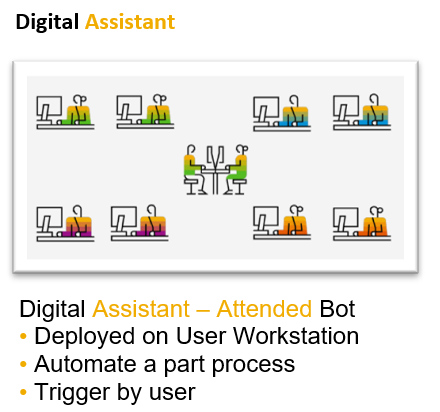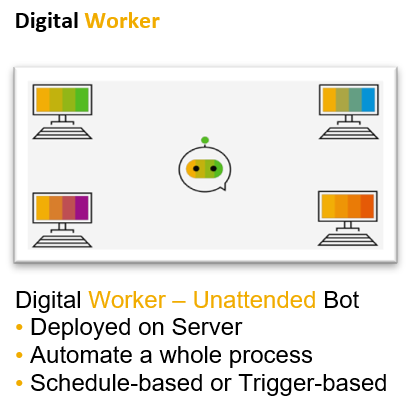At Clariba, digital transformation is a core element of our culture and strategy. We’re constantly researching and exploring new technologies with the potential to drive and accelerate business change.
In October, we were invited to take part in the “SAP Intelligent RPA and Intelligent Technology Packages Technological Workshop” for SAP Partners led by Andrew Ewing and Mazen Arawi at SAP TechEd Barcelona.
During the workshop Andrew and Mazen shared their substantial wealth of knowledge and skills regarding this emerging technology, and how it can be successfully deployed to create truly “Intelligent Enterprises”.
In this article we’ll explore the exciting potential of SAP intelligent technology, and look in detail at a couple of use cases which illustrate the possible real-world applications of Robotic Process Automation (RPA), as well as the effect they can have on your bottom line.
“Time is money” - is there a more frequently heard phrase in business? We certainly say it, but we don’t always think about the meaning. For example, in any business you’ll find hundreds or thousands of daily examples of time being wasted, particularly where highly qualified people are required to perform mundane, repetitive tasks.
Answering everyday queries, transferring data between systems, setting up payments or purchase orders - these are all examples where demands on time end up costing significant amounts of money. How can we remove these basic tasks and free up our talent to do what they’re actually good at - deploying their expertise efficiently and effectively?
Robotic process automation is one answer to that question. The graph below illustrates clearly how RPA can replace qualified personnel in tackling basic level activities, freeing up resources to work on higher value tasks.
So what is SAP Intelligent Robotic Process Automation?
RPA itself is not a new tool, it’s been used in one form or another for some time now to automate tasks such as data entry, data extraction, report or order creation and so forth. This enables businesses to perform tasks faster, with less margin for error and allowing humans to focus on areas that add greater value to the business.
SAP Intelligent Robotic Process Automation (Intelligent RPA) goes much further: using conversational AI for more natural interactions with the bots; utilising metadata and APIs to widen the scope of what the bots can do; and implementing machine learning to improve automated processes over time.
Intelligent RPA can be used in two distinct ways - as a digital assistant, or as a digital worker.
The digital assistant is an attended bot, deployed on a user’s workstation and triggered by the user to automate certain steps in a process.
The digital worker is an unattended bot, deployed at the server level, and capable of automating whole processes in response to preset triggers or a defined schedule.
Here are some examples of tasks which might be handled using Intelligent RPA:
Checking service desk tickets and routing appropriately
Extracting data from documents, apps or websites and entering into a database
Logging into multiple SAP instances, collecting purchase requisitions and distributing them to teams
Downloading reports from multiple applications, collating and storing/sharing them
Searching for invoices by reference number across multiple ERP instances
The total potential applications of Intelligent RPA are almost infinite, but to give a practical illustration of their use, let’s look at two real-world scenarios and the business value/benefits of each.
Scenario A: Creating a purchase requisition from an Excel sheet
In this example, we’re automating a low-skill, high frequency task - creating a simple purchase requisition using source data stored in an Excel sheet.
We design a bot to read data from an expected template format, created in Excel, and then use a standard whitelisted API to create a purchase requisition in S/4HANA.
The result - faster creation of purchase requisitions, elimination of potential human error and integration into existing or new workflows, all without any technical supervision. On top of this, human resources within the purchasing department can be redeployed to more complex tasks.
Scenario B: Creation of down payments on a purchase order
In this example we have another low skill task which is time consuming for a human operator.
Creation of down payments on a purchase order requires that they open several different applications to create and then post the down payment. And the volume of payments which can be processed by a single operator are necessarily limited.
We design a bot which can access the relevant applications via whitelisted APIs, and read/write data to post the payment.
The result is a reduction in data transfer errors and a substantial increase in capacity, thereby avoiding delays in posting DPRs which could in turn lead to postponed delivery of urgently needed materials or services. And once again, we’ve freed up time for our human operator to tackle higher level work.
While the examples we’ve given may seem simple at first, and indeed inconsequential on a micro scale, once we add up the time and costs saved with each iteration of tasks like these, we begin to see significant savings.
Successful implementation of Intelligent RPA within your workflows could allow you to automate as much as 50% of business processes. You can expect at least a 20% improvement in run-rate cost efficiencies, as well as reducing process time by 50% or more.
As you’ll agree, these are not insignificant figures - the savings really stack up. But that’s just the direct effect of Intelligent RPA. Indirectly, you’re also freeing up time for your workforce and creating space to address high level tasks.
Whether your priorities are in research and development, marketing, analysis or training, the new opportunities opened up will prove invaluable.
If you’re ready to take the next step contact us and let us discuss options on how you can achieve significant savings with RPA!





